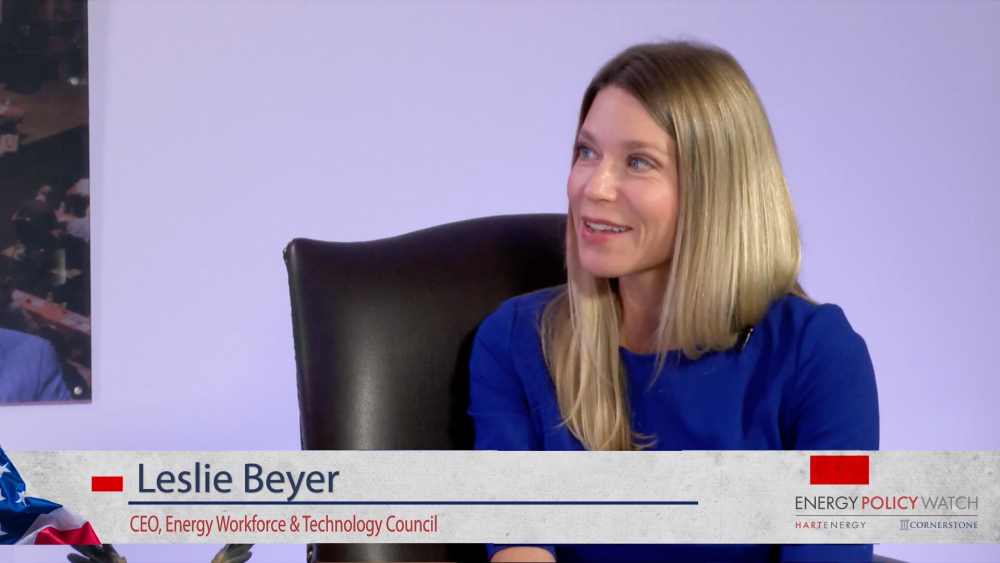
(Source: Energy Workforce & Technology Council)
Presented by:

Editor's note: This article appears in the new E&P newsletter. Subscribe to the E&P newsletter here.
ESG is here to stay, and questions abound. Does my company understand its roles in ESG? Are we integrating ESG into our operations or are we focused on the next sustainability report? What do we consider material data for our company? What metrics and goals are we using? Is leadership committed to ESG and is the rest of the organization embracing it?
Within the energy services and technology sector, companies are at varying stages in knowledge, planning and defining ESG priorities. Some have just begun their ESG “journey” while others have integrated ESG into their operations and are executing on stretch goals. There is no silver bullet for ESG success, but there are principles for reaching the objectives important to your company.
First, there’s a daily avalanche of ESG information from government, non-governmental organizations (NGOs), investor entities, ratings organizations, and thought leaders. While it’s important to know the landscape, it’s not essential to know every blade of grass. Choose a credible source and a recognized reporting protocol that fits your operations and get started.
Begin by understanding that ESG is an opportunity to gather information about the good work your company is already doing and tell your story. It’s a chance to educate policymakers, the media and the general public, who often don’t know how businesses actually work.
Second, you don’t have to reinvent the wheel. Read ESG reports, study what’s happening around the world in this field, talk to your peers in the industry and find reference documents that address a need your business has. And then shamelessly copy what fits your company’s strategic goals.
Third, there’s no such thing as perfection. Like golf or playing a musical instrument or nearly any other human activity, there’s getting started and continuous improvement. Making ESG integral to your business operations is a process of measuring what you’re doing, setting goals to get better and setting new goals once you meet them.
For more check out Energy Workforce & Technology Council CEO Leslie Beyer’s discussion on ESG in a recent episode of Energy Policy Watch.

Fourth, get educated. There is an array of good ESG training programs, including the ESG Certification Program offered by the Council. What’s important is finding a program that elevates individual ESG knowledge with a broad curriculum, provides access to a cadre of experts that allow participants to pursue answers to specific questions facing their individual companies and provides opportunities for participants to network so they can learn from each other’s experiences.
Fifth, keep in mind that ESG and capital are intertwined. An ESG story that addresses the expectations of investors will keep the capital flowing. As reporting and materiality criteria continue to evolve, it is critical to keep your company’s audience in mind. A strong ESG program with the right buzzwords and tactics can fail if the effort isn’t aligned to the criteria sought by your investors, lenders, raters, and others.
Sixth, use ESG to tell your company’s story. Your progress sets the tone for improvement across the sector and creates an example for others to follow. Share your successes with media, the public, in industry forums and with state and federal officials. Slashing emissions, increasing efficiency, improving inclusion and diversity, developing breakthrough innovative technologies are all things the world needs to know about your company and the energy services sector.
Last, if your company is further down the road, reach back to give others the benefit of your experience. The public doesn’t view this sector as individual companies but rather as part of an industry. The industry’s reputation is affected by each company’s actions, which means by helping others, you’re helping your own business as well.
Recommended Reading
NAPE: Chevron’s Chris Powers Talks Traditional Oil, Gas Role in CCUS
2024-02-12 - Policy, innovation and partnership are among the areas needed to help grow the emerging CCUS sector, a Chevron executive said.
Deepwater Roundup 2024: Offshore Australasia, Surrounding Areas
2024-04-09 - Projects in Australia and Asia are progressing in part two of Hart Energy's 2024 Deepwater Roundup. Deepwater projects in Vietnam and Australia look to yield high reserves, while a project offshore Malaysia looks to will be developed by an solar panel powered FPSO.
CEO: Continental Adds Midland Basin Acreage, Explores Woodford, Barnett
2024-04-11 - Continental Resources is adding leases in Midland and Ector counties, Texas, as the private E&P hunts for drilling locations to explore. Continental is also testing deeper Barnett and Woodford intervals across its Permian footprint, CEO Doug Lawler said in an exclusive interview.
Tech Trends: Halliburton’s Carbon Capturing Cement Solution
2024-02-20 - Halliburton’s new CorrosaLock cement solution provides chemical resistance to CO2 and minimizes the impact of cyclic loading on the cement barrier.
Deepwater Roundup 2024: Offshore Africa
2024-04-02 - Offshore Africa, new projects are progressing, with a number of high-reserve offshore developments being planned in countries not typically known for deepwater activity, such as Phase 2 of the Baleine project on the Ivory Coast.





